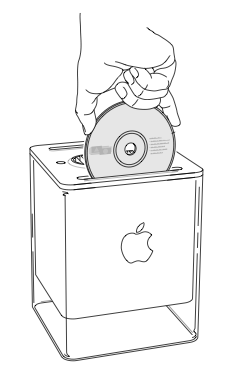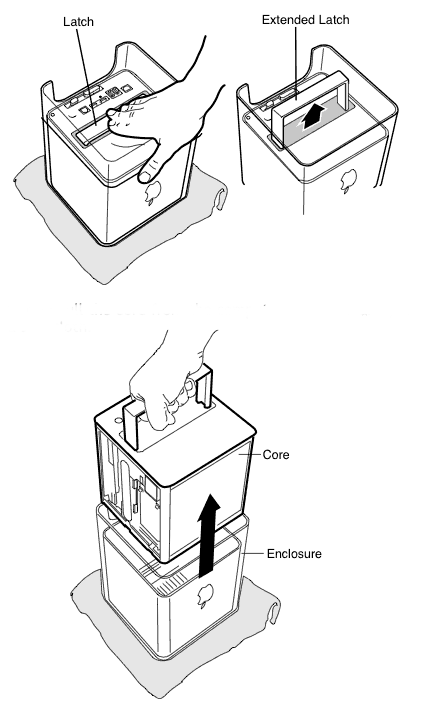This article is more than 1 year old
The Cube: Apple's daftest, strangest romance
Ten years on, we remember the bonkers box
The riddle of the Cube

The new machine presented us with a few paradoxes right away. It emphasised minaturisation, but it was actually quite a formidable beast. It demanded to be placed in view - which meant being placed on a desk, and from there it dominated its space.
It was harder to hide the peripherals, too, which inevitably detracted from the clean lines emphasised in the video above. It also hid a hefty secret - a very large (but naturally well designed) power brick dangled on the floor underneath.
As for the vaunted silent operation, well, the intentions were right, and the execution was mostly brilliant. In the Cube's original configurations, it didn't need a fan, and it didn't overheat. Users though, expecting the first version of Mac OS X to drop at any moment, clamoured for the model with the more powerful ATI Radeon 32GB VRAM graphics card - which did have a fan, and a fairly audible one.
There was a bigger problem.

The designers seem to have overlooked the spinning disk drive which transmitted vibration down directly through the plastic, into the desk - making it almost as obtrusive as a desktop machine. You felt the Cube up through your elbows.
The story is now well known of how cracks appeared in the casing, and the press gleefully ran with the story. Apple denied them, explaining they were "mould lines". What was harder to live with was the power switch.
In theory, you simply placed your finger on the smooth plastic, over a static capacitor concealed within. In a forerunner of the iPhone screen, it was activated using the body's static capacitance. It could be easily activated by accident - but worse, it responded to light and heat as well as human bodies.
Our publisher was unfortunate enough to decide to put it in a conservatory, where it turned itself on and off as it pleased. Years later it would do the same thing for me in San Francisco. It was never rectified - you had to seal off the sensor underneath with some masking tape..

The press marveled at it, and the Cube began to appear on reception desks at design studios, advertising agencies and dot.coms. Clones began to appear.
But by October it was clear sales were poor, and Apple was offering refunds to bring down the price, effectively throwing in a monitor for free. Apple blamed a poor quarter on lower-than-expected Cube sales. By early 2001 the dot.com bubble was bursting, throwing the economy into a recession. Less than 100,000 Cubes had been shifted.
In March 2001, MacUser reported the team had been disbanded. MacWorld reported that was buying back Cubes from the retail channel, quoting a CompUSA salesman as saying: "When you sell only a couple of Cubes in a month, no price decrease in the world will matter."
On July 3, Apple put out a statement confirming that it had decided "to suspend production of the Power Mac G4 Cube indefinitely". Apple wouldn't put out a headless Mac until 2005, with the Mac Mini. But this was aimed at the budget buyer, used laptop parts rather than premium components for performance, and had none of the style of the Cube. It was designed to be ignored, and not the centre of attention.
What went wrong
If it had launched a year or two earlier, in the insane spending spree of the dot.com era, it may have been a different story. But Apple's marketing suggests it too was nervous about the appeal.
The five-minute promotional video introduces it as a "super computer" - and the original press release emphasised a "Pentium-busting" performance. But it was no more of a "super computer" than its G4 siblings in the PowerMac line. This suggests a lack of confidence in the design - Apple felt it had to be utilitarian, too.

Pulling out the reactor core
It hadn't helped that Apple had missed the Napster era. PCs came with CD burners while Apple insisted machines were sold with DVDs or CD drives. Apple certainly made up for it in 2001, starting with the "Rip Mix and Burn" campaign - and version 1.0 of iTunes. And it never forgot the importance of music - creating the digital music retail market in 2003, where labels had failed.
